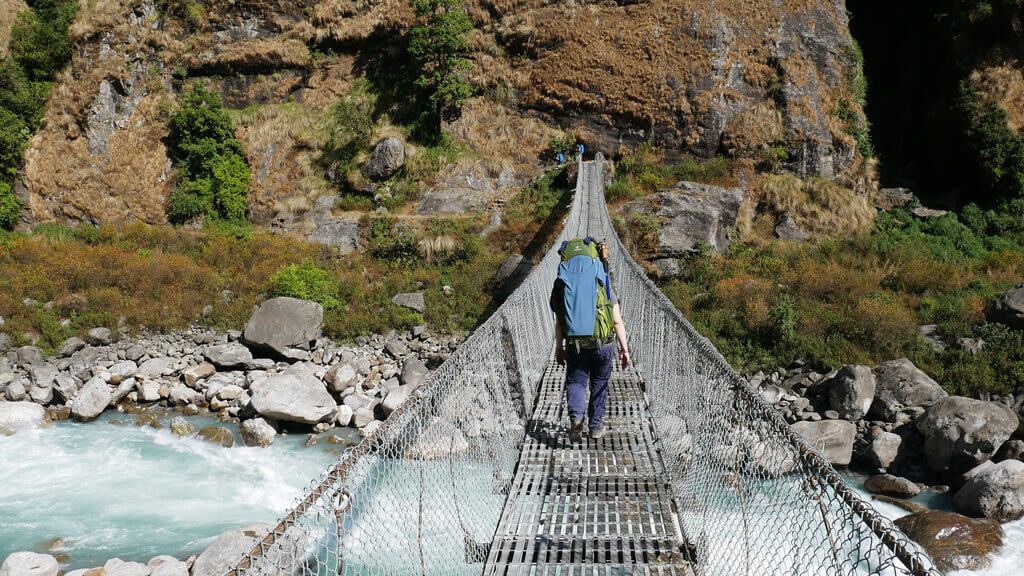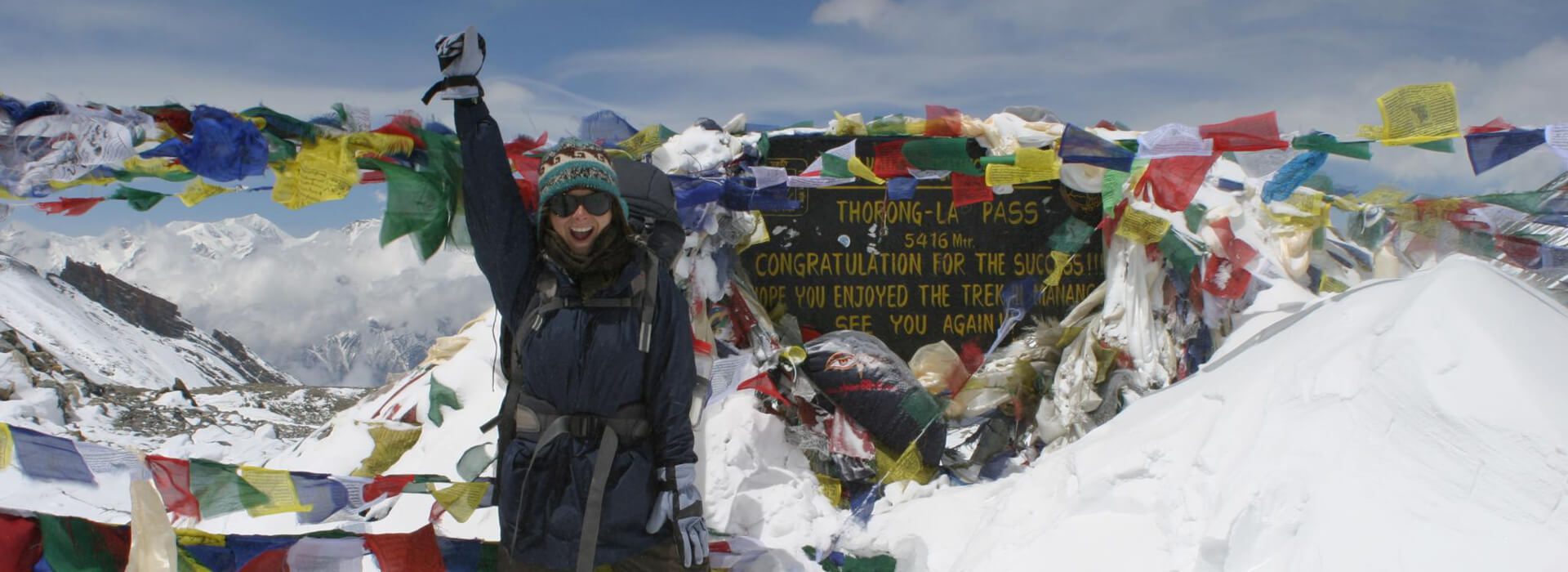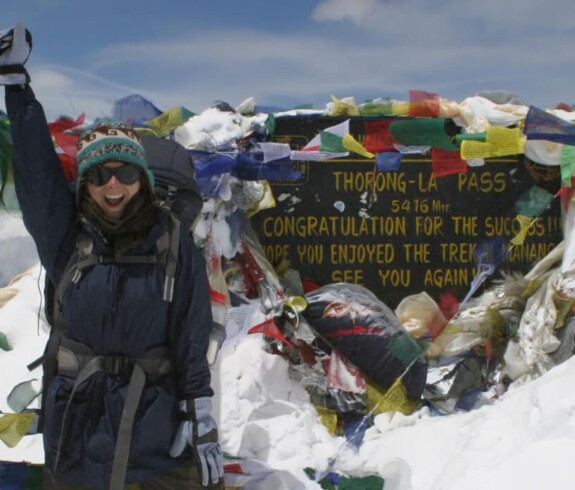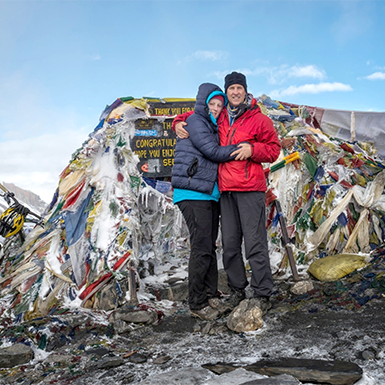When planning a trek anywhere in the world, having basic knowledge regarding the weather and temperature of the trekking region is essential.
Especially in Nepal, knowing about the weather and temperature is crucial. Due to the varied landscapes and altitudes, the weather and temperature vary drastically.

Talking about the landscape of Annapurna Circuit is pretty different than other regions. Annapurna Circuit Trek lies in the rainshadow area of Annapurna and Dhaulagiri Massifs, making the trek possible throughout the year.
This Annapurna trek is renowned for its climatic changes. The Annapurna Circuit trail takes you from subtropical meadows to semi-arid lands.
Annapurna Circuit Trek is considered one of the best long-distance treks globally, and you will get picture-perfect views and remarkable scenery any time of the year.
Annapurna Circuit Trek Weather and Temperature – October and November
October and November is the best time to trek the Annapurna Circuit. During these months, the Annapurna trail is filled with the energy and aura of trekkers worldwide.
October and November come under the autumn season in Nepal. Since autumn comes after the monsoon, the dust settles down, and the mists clear up.
During autumn, you will experience clear blue skies with lesser clouds. You will have exotic views of the majestic mountains and surrounding landscapes. Also, the vegetation is fresh and blooming.
The night view during this time is no less. You can enjoy the fantastic starlit night sky. And I am sure that the fantastic clarity will surprise you.

On the lower areas of the trek, the weather is quite sunny, with an average temperature of 15 degrees Celsius during the day. But, the nights get chilly, with 7-8 degrees Celsius on average.
Unlike the lower region, the higher altitude areas are much colder. When you get above 4000m altitude, the weather gets noticeably colder.
Thus, it would help if you were prepared to face the freezing weather in these areas. So, pack warm layers of clothing for your Annapurna Circuit Trek packing essentials.
There is a meager chance of rainfalls and snow during the autumn months. Hence, October to November is considered the best month for Annapurna Circuit Trek, with the best weather and temperature.
Related Articles
- How Difficult is the Annapurna Circuit Trek?
- Annapurna Circuit Trek Cost
- Annapurna Circuit Trek Highlights
Annapurna Circuit Weather and Temperature – March to May
March, April, and May are the spring months in Nepal. Spring is the second-best season to trek the Annapurna Circuit. Spring falls after winter, so the snow starts to melt and clear the trails. Thus, the trails get flooded with trekkers as the spSpringegins.
March is the beginning of the spring season. Like autumn, Spring is a beautiful time to get crystal clear views of the massive mountain peaks and beautiful landscapes. During this season, the vegetation is at full blossom. Thus, you can witness colorful blossoms of rhododendrons and other wildflowers during this time of the year. Hence, it is the best time for trekkers who enjoy flora and fauna.
The days are sunny and bright during the early spSpringMarch and April), the days are sunny and bright, with an average temperature of 10 degrees Celsius in the lower regions. The nights are much colder than the day. And once you get above the altitudes of 4000m, the evenings and mornings are usually freezing.
The region’s temperature rises as it approaches the monsoon season by May. The average temperature ranges from 18 to 22 degrees Celsius during the daytime, but the nights are colder than the days.
The higher altitudes have lower temperatures. You can enjoy bright, warm days at altitudes above 4000m.

Annapurna Circuit Weather and Temperature – June to August
June-August falls under monsoon month in Nepal. Trekking during the start of June and the end of August, you won’t get much rain. But in between this time, i.e., during July, the region encounters a torrential amount of downpours. There will be many leeches, mosquitoes, and other pests in the lower part of the trek.
However, this is not the case in the overall trek. Due to the diverse landscapes, most parts of the trail of Annapurna Circuit can be trekked without a trace of rain. Since the northern part of the Annapurna Circuit falls under the rainshadow area of Annapurna Massif, it won’t see much rain. Yet, this time of the year is the off-season for this trek.
The southern part of the trek gets heavy rainfall causing causes landslides, avalanches, flight retractions, and delays on the path. If you are an adventure lover, it may be favorable for you.
Unlike the southern section, the northern territory of the Annapurna Circuit trek(e.g., the Mustang district) is dry. These regions are arid and also called the deserts of Nepal.
You can fully experience these parts of the Annapurna Circuit or treks in Nepal’s other rain shadow areas like the Upper Mustang Trek, Dolpo Trek, and Tsum Valley Trek.
The southern segments of the Annapurna locale get a standard 600-800mm of rain every month during this period. And the areas like Jomsom, Lower Mustang, and Mapha get as meager as 50mm.
You can also experience the water bodies coming alive during these months, which remain dry in other months. You can also enjoy the region’s lush green forest, rich flora, and fauna.
Related Articles
Annapurna Circuit Weather and Temperature – December to January
December to February are the winter months in Nepal, making them the coldest months in the Annapurna region. The temperature during winter varies depending on the altitude.
The average daytime temperatures range from 7-12 degrees Celsius in the lower regions. The average temperature can range between 2-8 degrees Celsius at higher altitudes. The temperature can even get to a harmful degree during the day.
Thorung La Pass may remain closed during the winter season due to heavy snowfall. So, I recommend you check the condition of the pass before trekking across the pass. Also, you may trek during early December to avoid the blocked pass.
The weather is usually cloudy during these months. But you can enjoy the beautiful views of snow-capped mountains if the days clear.

Related Posts
Annapurna Circuit Weather and Temperature- September and February
September and February are two shoulder months. So, if you are trekking during these months, you can experience two seasons within a month.
1. September
September is a transition month from the monsoon to the autumn season. So, you may still enjoy the ending showers of the monsoon season. During early September, the rains are usually short and fall late evenings.
When the time approaches mid-September, the monsoon will officially end. Thus, you can take in the perks of the autumn season in late September. It is the best time to enjoy the highlights of October and November, and there won’t be many trekkers on the trail.
At high mountain passes like Thorong La, the temperatures can drop up to -4 degrees Celsius. However, other areas of the trek will be much warmer. In the lower region, the temperature is quite warm, with an average temperature of 18-22 degrees Celsius during the day. When you get to the higher altitude (2500-4000m), the temperature is significantly colder, with an average temperature of 8-12 degrees Celsius.
2. February
February is the shoulder month for the winter and spring seasons. Early February is the last week of the winter. So, the temperature is negative degrees, and snowfalls can be expected. By mid-February, spSpringicks in.
If you are trekking in early February, there are chances that the day will be cloudy. But you have the clear days; you get a breathtaking view of the crystal clear snow-capped mountains covered with shining white snow.
You can start to see the wildflowers blossom in the lower regions by late February. You can witness the entire hillsides covered in colorful blossoms of wildflowers that make picturesque landscapes and snowy mountains.
The temperature begins to rise in mid-February as the spSpringfficially starts. Hence, you will be able to experience the perks of Spring without the crowds.
Related Articles
Extra Tips on Annapurna Circuit Weather and Temperature
- Select the trekking season according to your preferences. Don’t choose the season based on others’ experiences.
- Since every season has advantages and disadvantages, select the time at which you are more comfortable.
- The Annapurna Circuit Packing list varies with the season. So, while packing for the trek, keep the weather in mind.
- The weather and temperatures at the passes and small peaks are more extreme than in the other regions of the trek.

Conclusion
As I said earlier, I can do the Annapurna Circuit Trek at any time of the year. All you need is the proper preparation, gear, and supplies to make the trek successful and memorable.
Depending on what you expect from the trek, decide the season you want to do the trek in. Feel free to contact us for further queries or questions about Annapurna Circuit or other Nepal treks.


